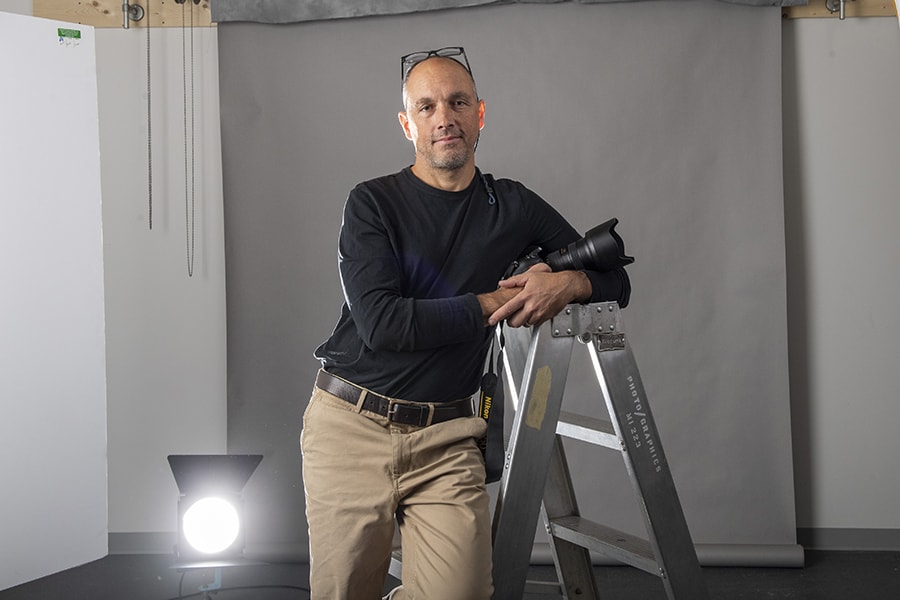
Kaulen Artfully Supports Local Youth
By Kelly Saavedra
As an art student in the 1980s, Tim Kaulen enjoyed going home for the holidays to rural Pennsylvania, where he would find his grandfather, a railroad worker, tinkering around the yard making goose decoys out of squared-off timbers, corrugated plastic and metal posts.
“They were clunky, funky and weird,” said Kaulen, who has been a sculptor of large-scale public art in Pittsburgh for more than two decades and a photographer at Carnegie Mellon University for the past 16 years. “Most people would call them primitive art sculptures. He made other really great things, but those pieces really inspired me.”
Kaulen brought that inspiration back to Pittsburgh, where it manifested in a number of ways. He started painting the goose shapes on abandoned storefronts in the city’s South Side neighborhood. He said he was compelled to draw attention to the buildings because he felt “they were members of the community and, although they were neglected and unused, there were still opportunties there.”
In the 1990s, Kaulen went so far as to climb the 10th Street Bridge and paint the geese at the top of the steel structure. When the shapes were painted over during the bridge’s renovation in October, nearly 1,000 people signed a petition to have them restored, which Kaulen did with the approval of Allegheny County.
“The notion of first painting the bridge came from a need to let people know something important and vibrant was happening in the South Side, specifically with regard to the arts and the opportunities there for young people,” Kaulen said.
Kaulen and his team of artists — the Industrial Arts Co-op — have set up shop in various abandoned mill sites over the years, where they have salvaged literally tons of steel to create works of public art on an industrial scale.
“It wasn’t enough to just visit these abandoned sites and document them,” he said. “We began developing small ideas into large sculptural things. We worked every Sunday dragging stuff around, tying stuff together. It was a pretty ambitious stretch of time, but ultimately led to more organized production. This renegade style of setting up temporary workspace and doing temporary projects eventually led to a more formal public commission.”
The group’s first formal commission, “The Workers,” honors the region’s strong, blue-collar work ethic and was erected on the shore of the Monongahela River in Riverfront Park in 2012. The sculptures were fabricated by more than 20 artists at the former LTV Coke Plant, now Hazelwood Green, and took 15 years to build.
Realizing the teaching and learning opportunities his art-making afforded, Kaulen started the Mobile Sculpture Workshop program through which he takes on 10 high school students as summer apprentices and teaches them how to create a work of public art for a neighborhood group. The students learn welding and design skills as well as soft skills for professional readiness, such as communication and how to work in a team environment.
“I discovered that I really like to share how things are made, not just ‘here it is’ but how you get to the final result,” he said.
Kaulen would love to see the Mobile Sculpture Workshop grow into a facility-based, after-school program in Hazelwood, and he hopes with more exposure he will attract the necessary support.
“Not every artist is drawn to be a teacher, but somewhere inside all of us is this innate desire to share what you do, to transfer your knowledge to somebody who is in a different place,” he said.
Kaulen, who studied photography at the Art Institute of Pittsburgh, supported himself as a freelancer before accepting full-time photography work at CMU.
“I love serving the university, especially the people,” he said. “I do a lot of environmental portraits, which is my favorite thing. It’s a brief window into somebody else’s work and what they do.”
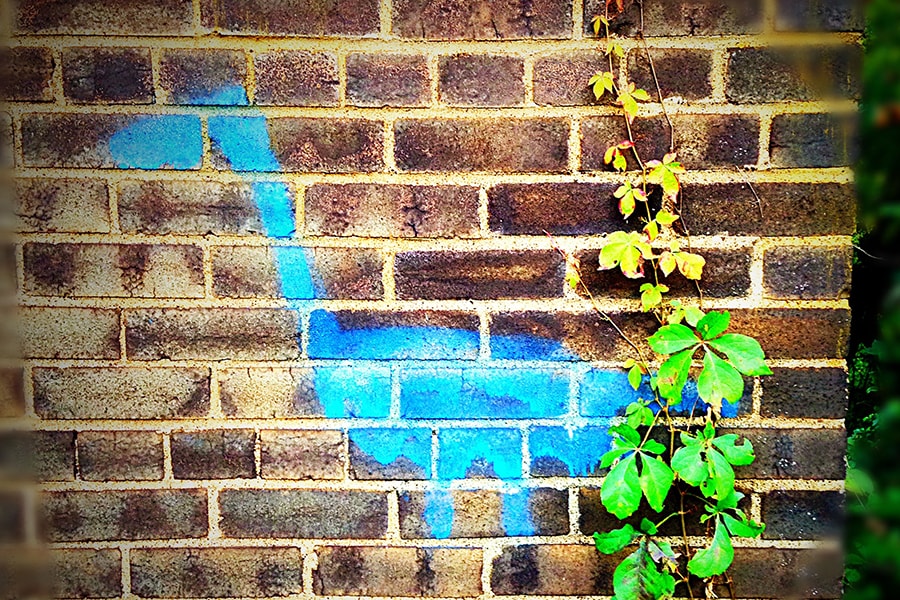
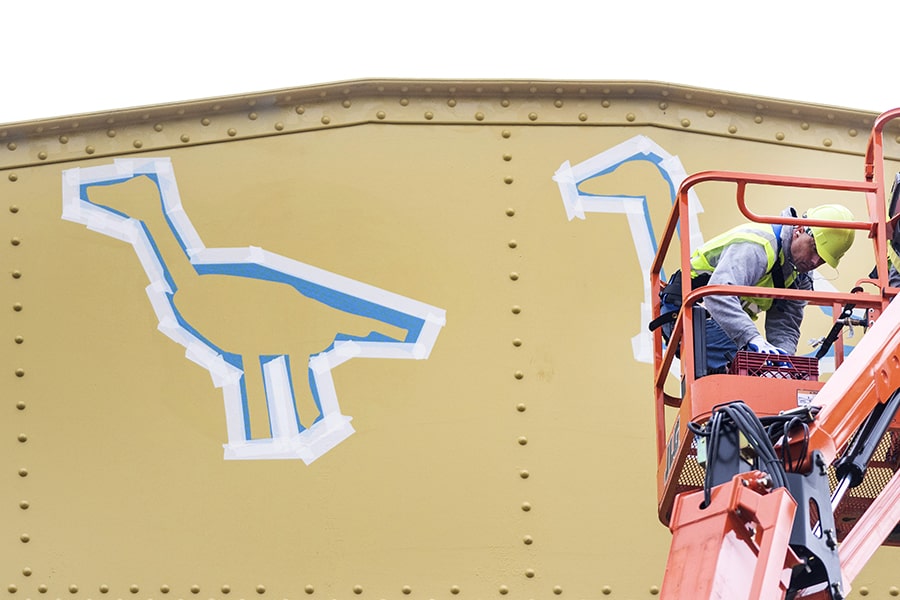
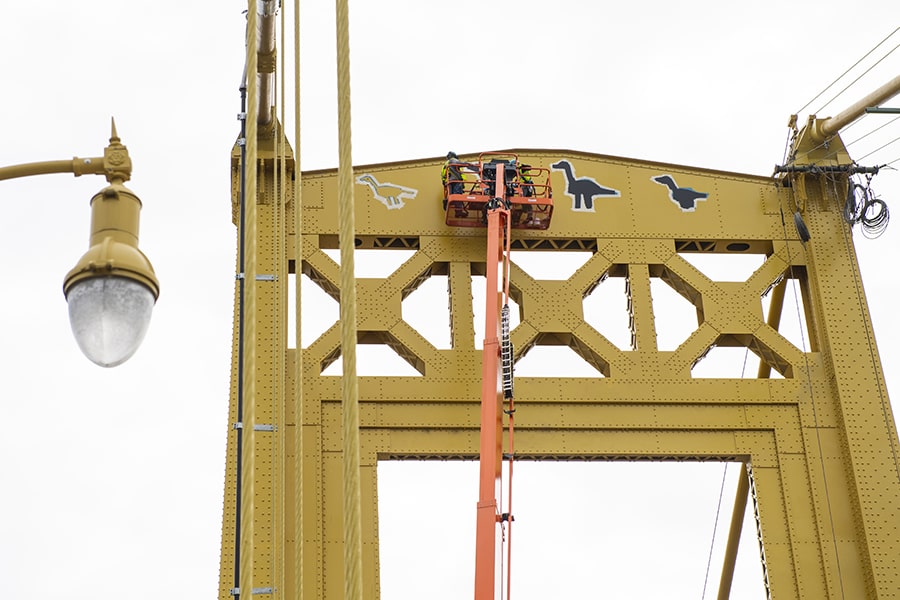
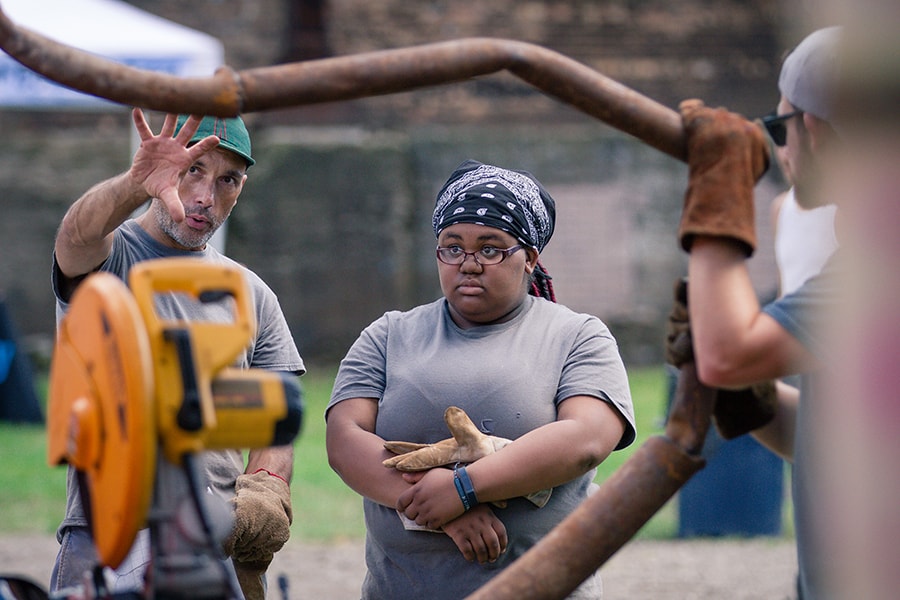
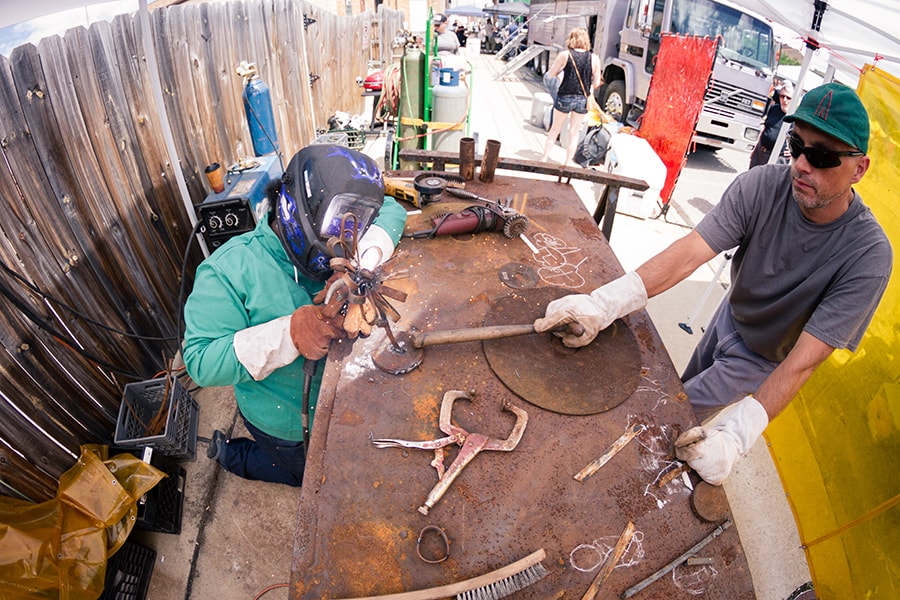
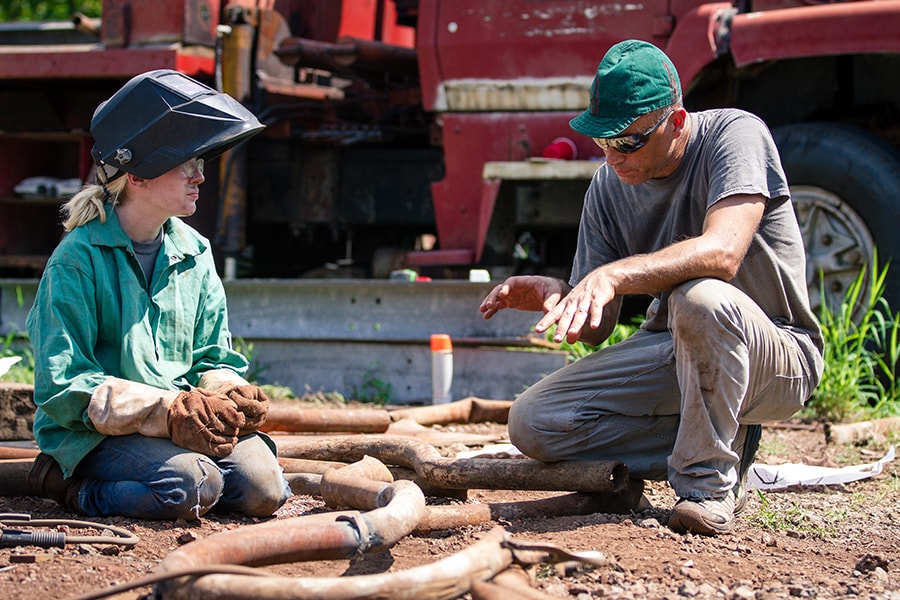
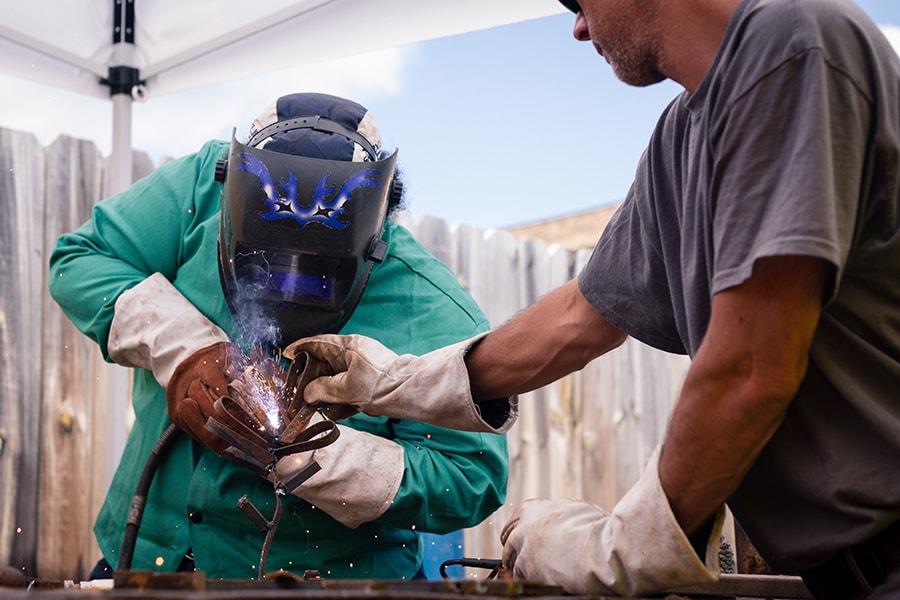
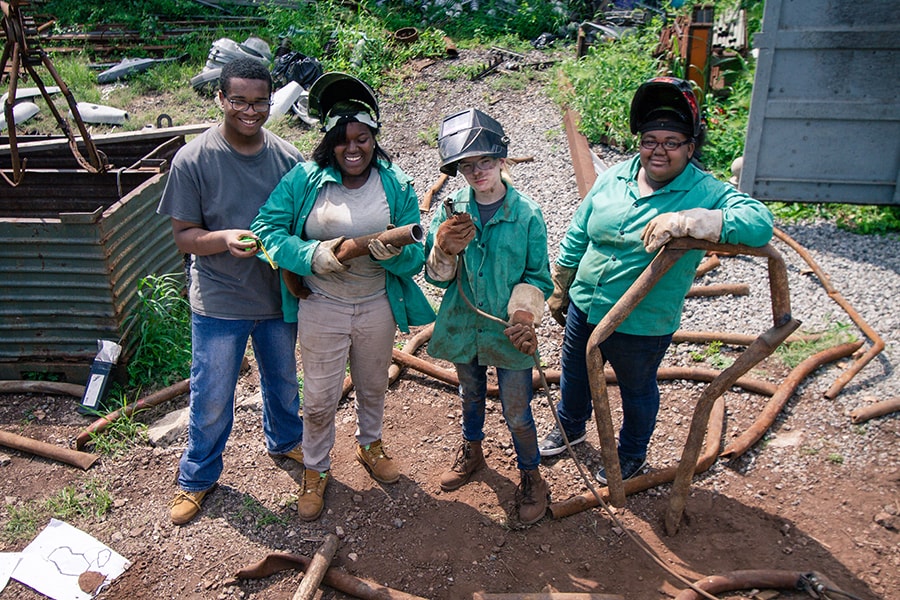
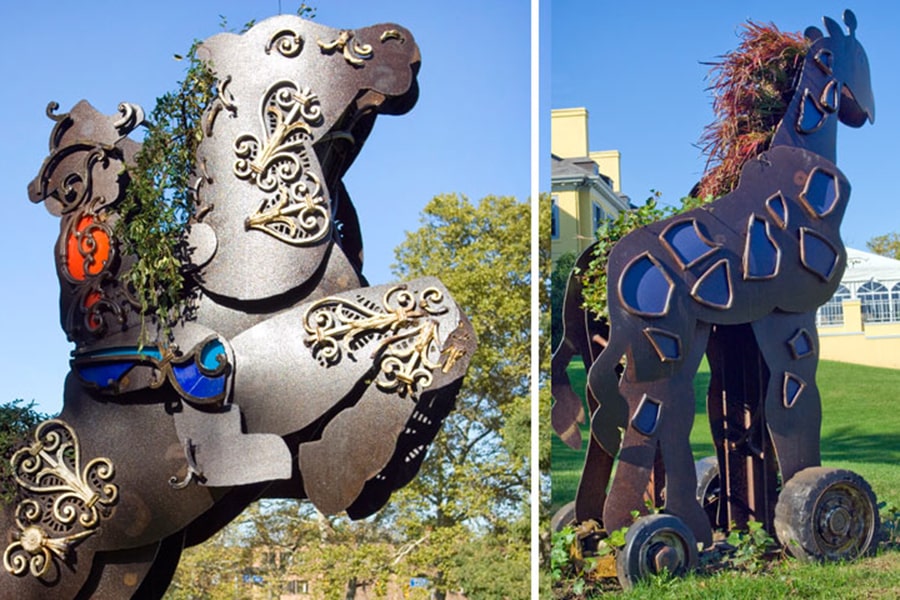
"Iron Horseman" (left) and "Giraffe" are metal sculptures made of recycled steel and iron to reflect tin toys and incorporate topiary accents. They were on display during the PCA Artist of the Year Exhibit at the Pittsburgh Center for the Arts in 2009.
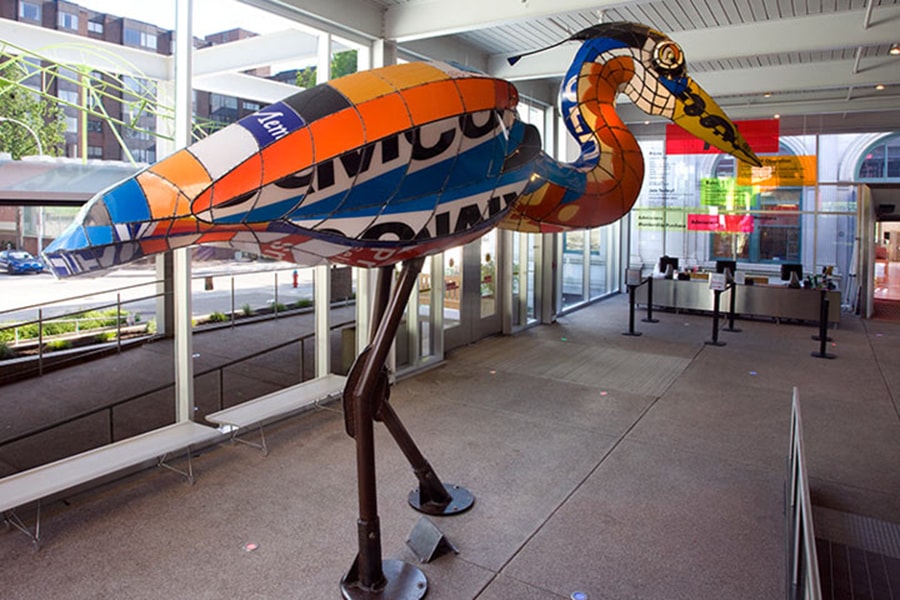
"One Great Blue" is a permanent indoor sculpture made of recycled plastic signs, steel and lights in the Children's Museum of Pittsburgh.
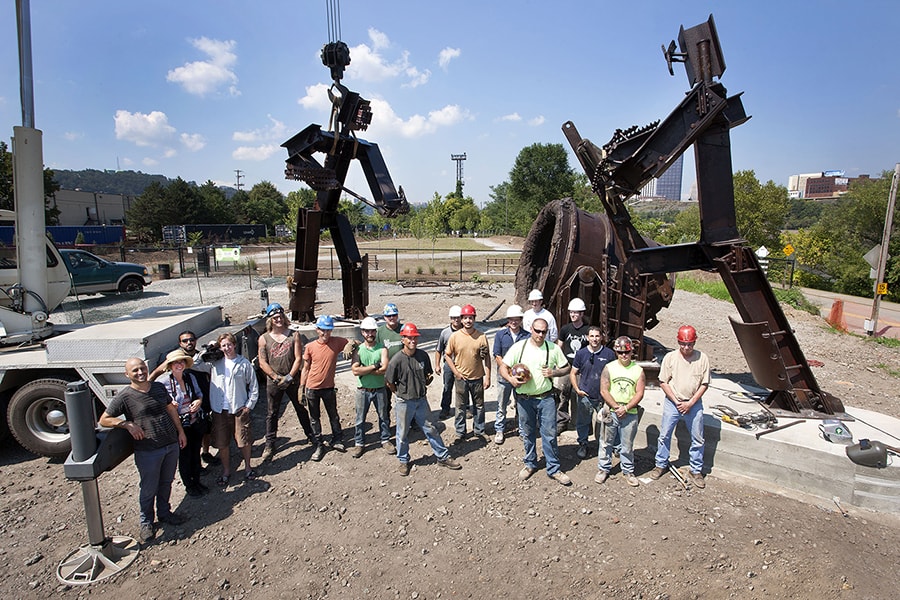
"The Workers" is made of reclaimed steel and features two steelworkers working at a hot metal ladle. This sculpture is located in Riverfront Park on Pittsburgh's South Side. Pictured are some of the Industrial Arts Co-op artists who contributed to the sculpture's fabrication along with Ironworkers Local 3 apprentices and members of Century Steel Corporation and PJ Dick Corporation.
